Winter Blooming Plants and Shrubs to Grow in Your Zone 8 Garden
Just because it’s winter doesn’t mean your garden has to be dull and lifeless! With the right cold-hardy, winter-blooming plants and shrubs, you can keep your outdoor space looking vibrant—even on the chilliest days.
Winter might bring bare branches and frosty mornings, but plenty of plants thrive in the cooler months, adding color, texture, and even a little fragrance to your garden. From cheerful flowers blooming in the cold to evergreen shrubs offering year-round interest, you can create a landscape that’s just as inviting in winter as in spring.
Keeping your garden colorful all winter long is easier than you think! Let’s look at some of the best winter-blooming plants to brighten your Zone 8 garden.

As an Amazon affiliate, I earn a commission from qualifying purchases at no additional cost to you. My blog also features other affiliate links for your convenience. Click here to read my privacy policy.
What Flowers Can Still Bloom in the Winter?
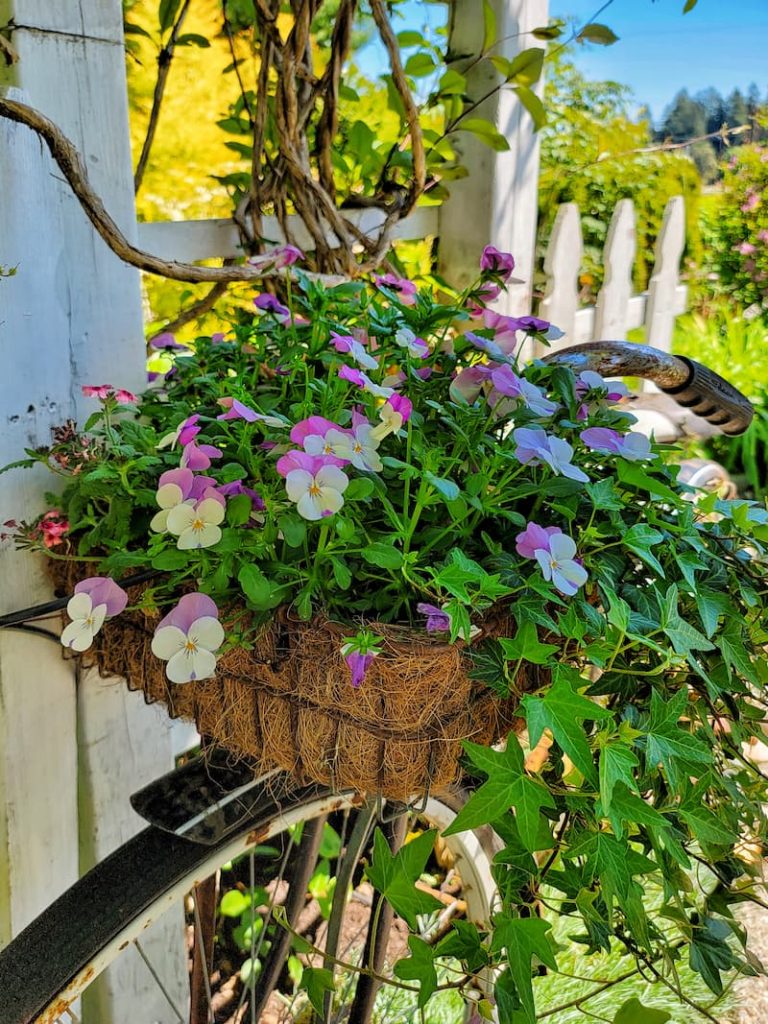
Even though most plants go dormant in the colder months, specific flowers and shrubs are hardy enough to bloom in winter, especially in Zone 8, where winters aren’t as harsh as in northern regions.
The key is choosing plants compatible with your specific winter conditions. Some bloom even in the frost, while others may need some protection to thrive.
Camiellas, hellebores, and pansies are some of my favorite winter-blooming plants for zone 8, but the list below has even more options.
Since I garden in USDA Zone 8b, the plants and shrubs I’m featuring work well in my climate. If you’re outside this zone, check your USDA Hardiness Zone to find the best winter-growing options for your area.
Benefits of Planting Winter Plants and Flowers in Your Zone 8 Garden
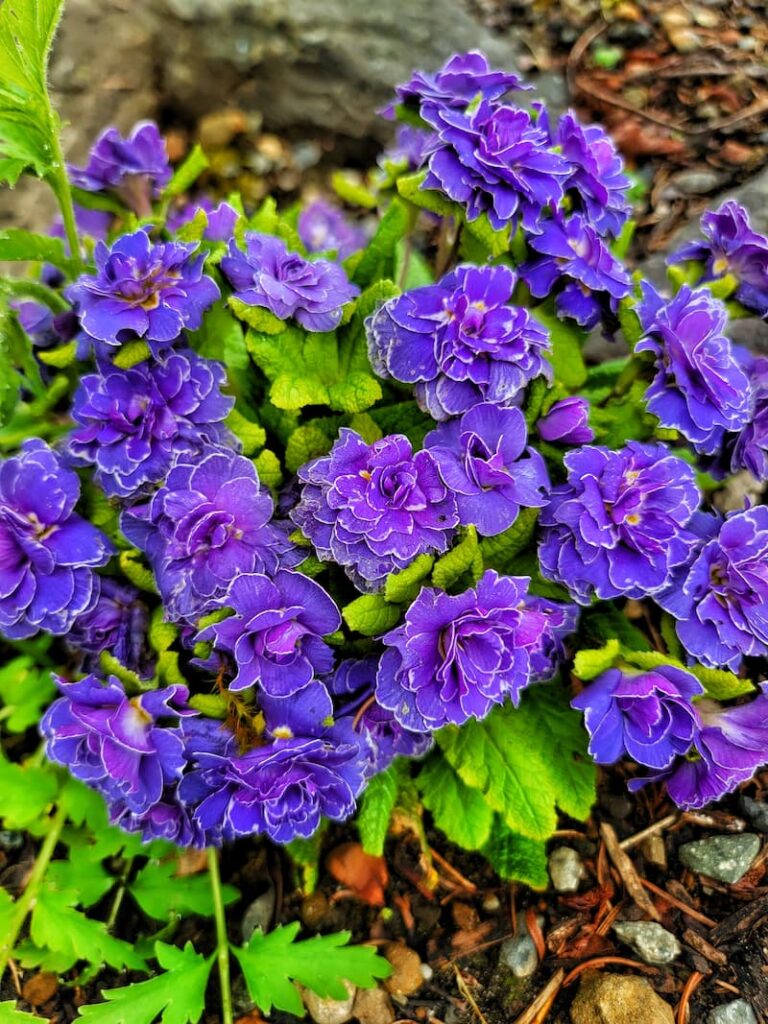
Winter might not seem like prime gardening season, but adding cold-hardy plants and flowers to your outdoor space has more benefits than just brightening things up.
A well-planned winter garden keeps your landscape looking alive, supports local wildlife, and even helps protect your soil from erosion. Plus, who wouldn’t love a few unexpected blooms when everything else seems to be taking a break?
By choosing the right winter-blooming plants and shrubs, you can create a garden that stays vibrant, colorful, and full of life—even on the chilliest days. Let’s dive into some of the best reasons to embrace winter gardening.
Year-Round Beauty
Winter plants add color, texture, and life when most of the garden takes a break. With evergreens and cold-hardy blooms, you can turn a quiet, frosty yard into a vibrant winter retreat—no matter the season!
Support Local Wildlife All Winter
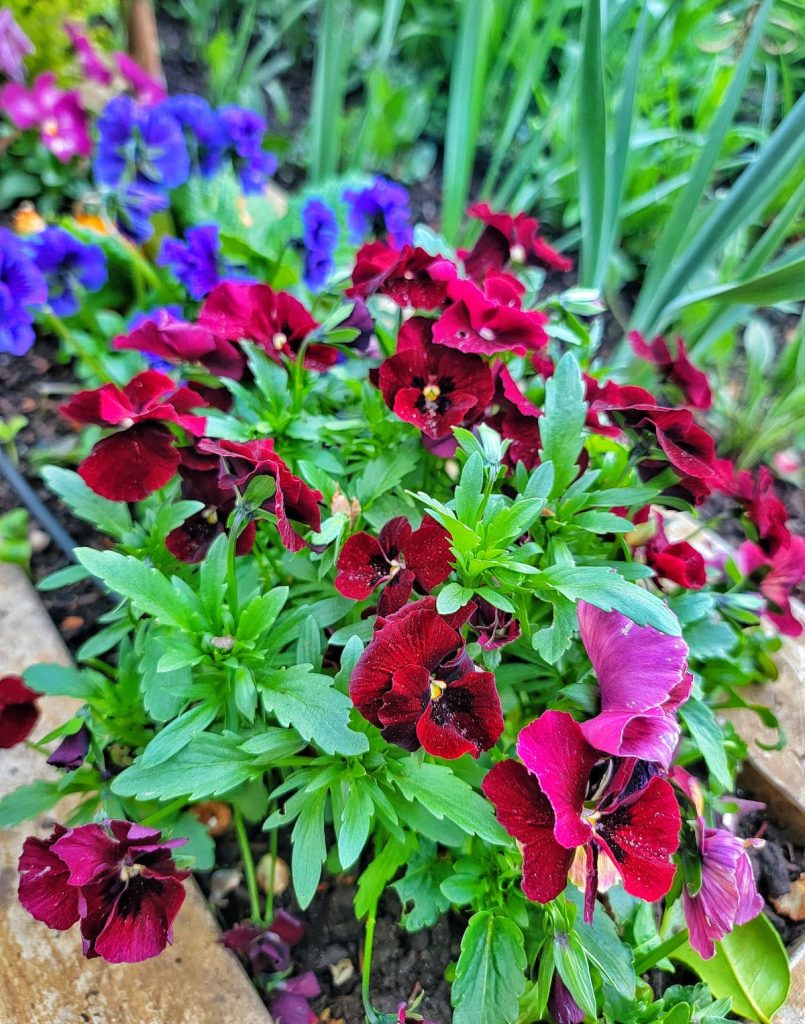
Winter plants do more than add beauty. They help birds, bees, and other wildlife when food and shelter are scarce. Cold-hardy plants provide nectar, berries, and seeds, while evergreens offer a cozy refuge from the cold.
By planting native winter-friendly plants, you create a mini wildlife haven that keeps your garden buzzing with life, even in the off-season!
Erosion Control
Winter rains can wash away valuable topsoil, especially on slopes or exposed areas. Planting winter ground cover helps hold soil in place, reduce runoff, and keep your landscape healthy.
These hardy plants act as a natural barrier, adding stability, texture, and greenery while protecting your garden from erosion—so your soil stays where it belongs!
Boosting Your Soil’s Health
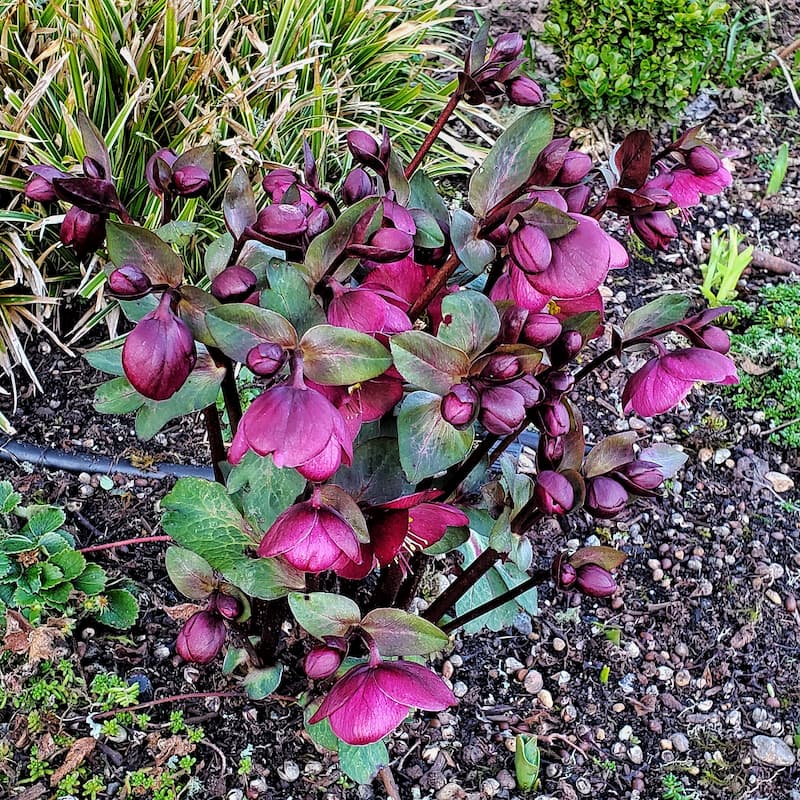
Winter cover crops like clover and rye do more than just survive the cold—they protect and enrich the soil by preventing erosion, suppressing weeds, and locking in nutrients.
Come spring, these hardy plants break down into organic matter, improving soil structure and fertility for a healthier, more productive garden. A little winter prep means better blooms and bigger harvests next season!
Year-Round Privacy with Evergreens
Evergreens keep your garden private and peaceful, even when other trees go bare in winter. Their dense foliage blocks unwanted views, reduces noise, and adds structure to your outdoor space.
Whether creating a cozy retreat, a wind barrier, or just adding greenery, these hardy plants do it all—plus, they give birds and wildlife a safe place to shelter in the colder months!
Fragrance in the Garden
Who says winter gardens can’t smell amazing? Witch hazel, winter jasmine, and daphne fill the crisp air with sweet, refreshing scents, making your outdoor space even more inviting.
Plant them along pathways, near entryways, or cozy seating areas to enjoy their subtle, uplifting fragrance—even on the chilliest days. A little winter bloom is a lovely reminder that spring isn’t too far away!
Garden Supplies and Tools
Check out my favorite garden supplies and tools for the growing season. Whether you’re looking for potting soil or deer repellent, you’ll find what I use in my own garden.
Best Winter Plants and Flowers for Zone 8b
Hellebore (Helleborus spp.)
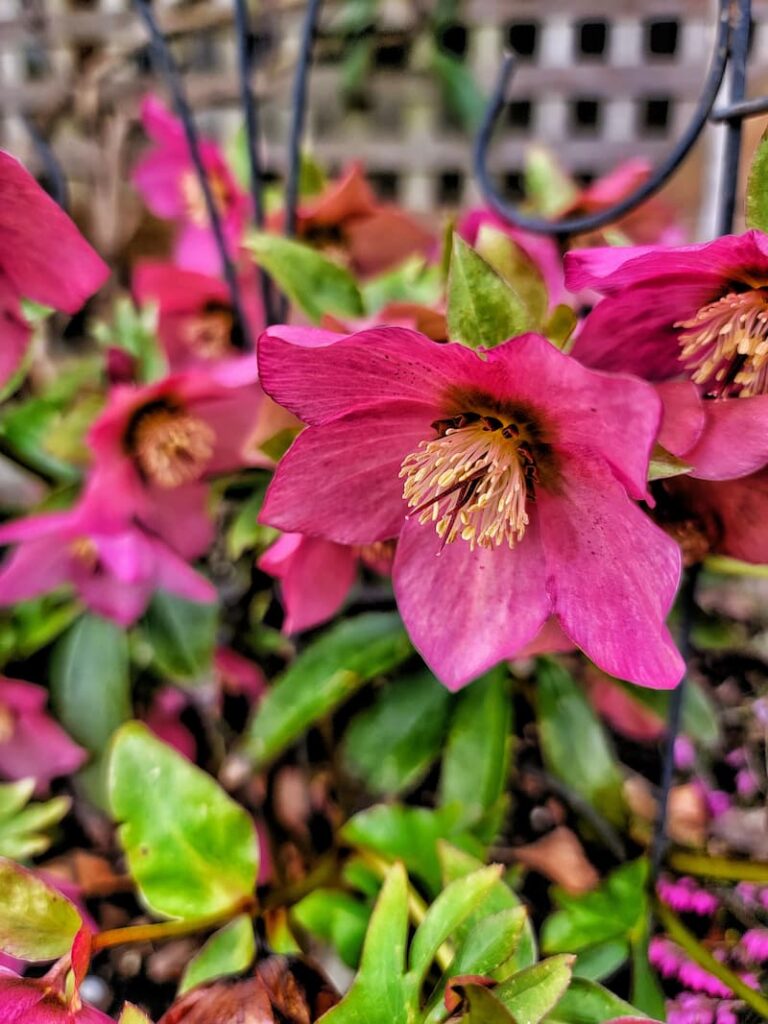
Winter Blooms & Colors
Hellebores, also known as Christmas Roses, Lenten Roses, or Winter Roses, bloom when most plants are dormant—sometimes as early as November in mild climates like Zone 8. Their cup-shaped flowers come in stunning shades of burgundy, white, pink, purple, and green, adding vibrant color to the winter garden.
Planting & Care
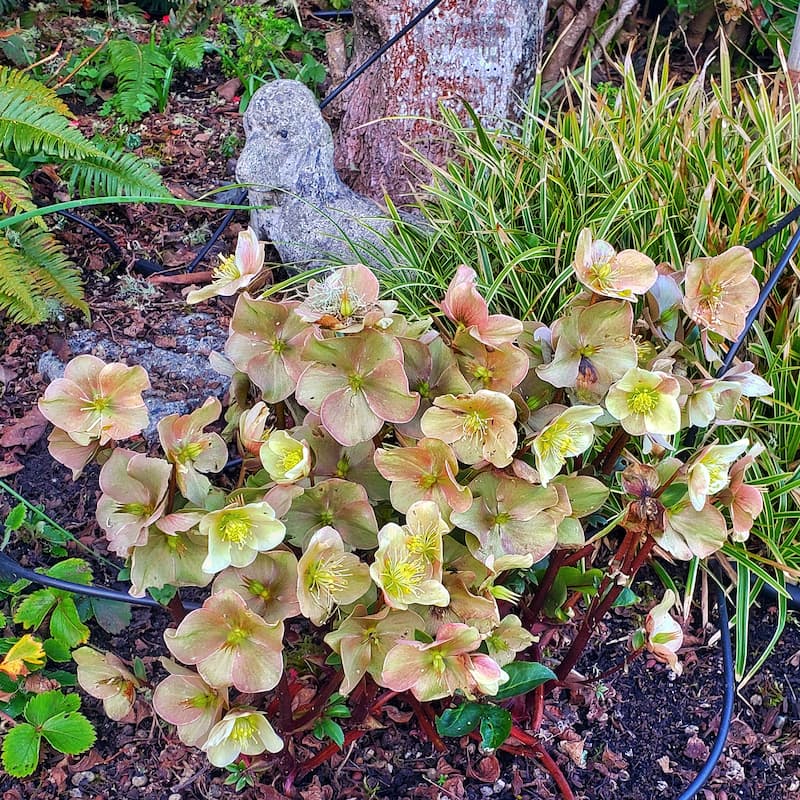
More About Hellebores
Hellebores are long-lasting in floral arrangements, perfect for bringing a touch of winter beauty indoors!
Cyclamen (Cyclamen spp.)
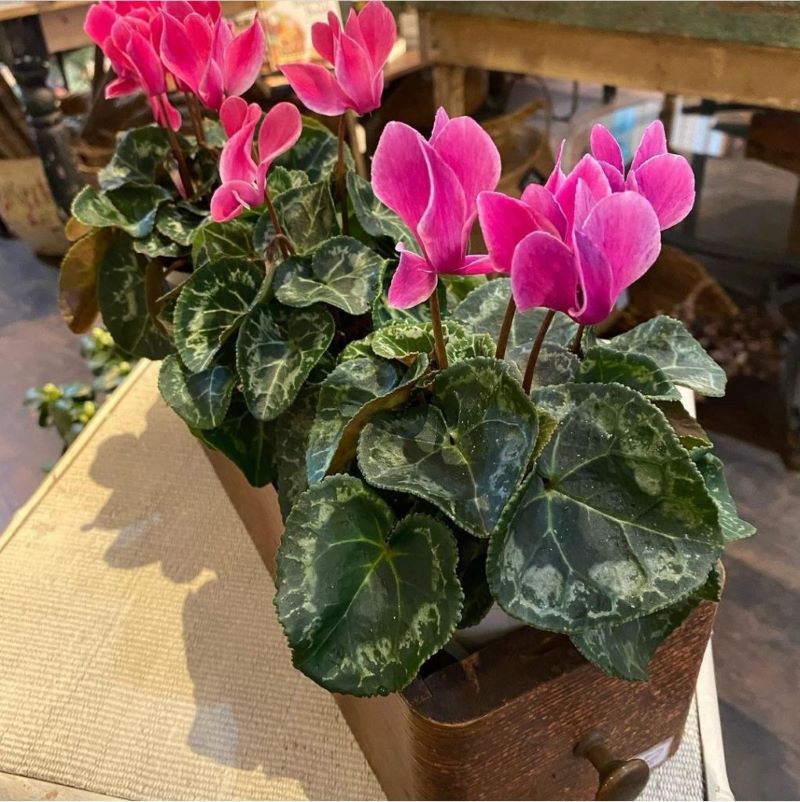
Winter Blooms & Colors
Cyclamen bring delicate petals in shades of pink, red, white, and purple, adding charm to the winter garden. In Zone 8, hardy varieties can bloom from late fall through early spring, thriving even in the cooler months. Their marbled, heart-shaped foliage adds extra visual interest year-round.
Planting & Care
More About Cyclamen
Cyclamen thrive in containers, rock gardens, or woodland settings, making them a versatile addition to any winter-friendly landscape!
Camellia (Camellia japonica)
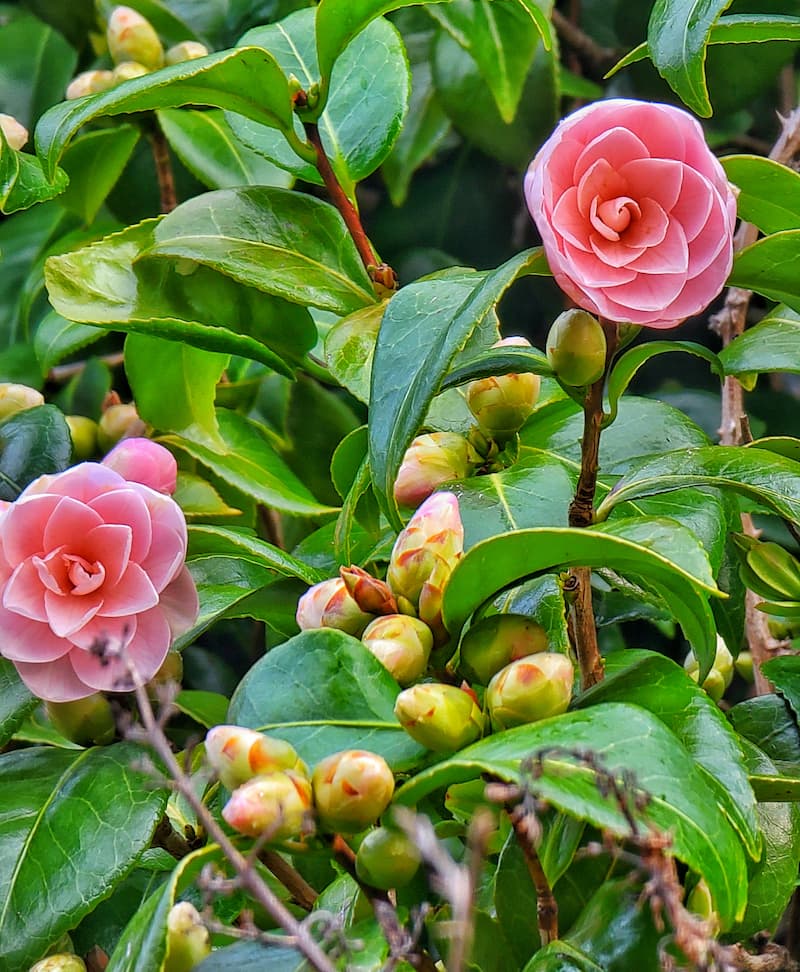
Winter Blooms & Colors
Camellias are one of the best winter-flowering shrubs, producing gorgeous, rose-like blooms in shades of pink, red, white, and even bi-colors. In Zone 8, Camellia japonica flowers in mid-to-late winter, providing months of color when little else is in bloom. Their glossy evergreen foliage adds year-round interest.
Planting & Care
More About Camellias
Camellias make gorgeous cut flowers and attract early-season pollinators.
Camellia evergreen trees can grow from 6-14′ tall and 5-7′ wide. My tree growing in my side yard looks even taller than 14′.
Heather / Winter Heath (Erica carnea & Calluna vulgaris)

Winter Blooms & Colors
Winter Heath is a cold-hardy evergreen shrub that blooms in pink, purple, white, and red from winter through early spring. Its dense, needle-like foliage adds texture and year-round interest, making it a great choice for rock gardens and borders.
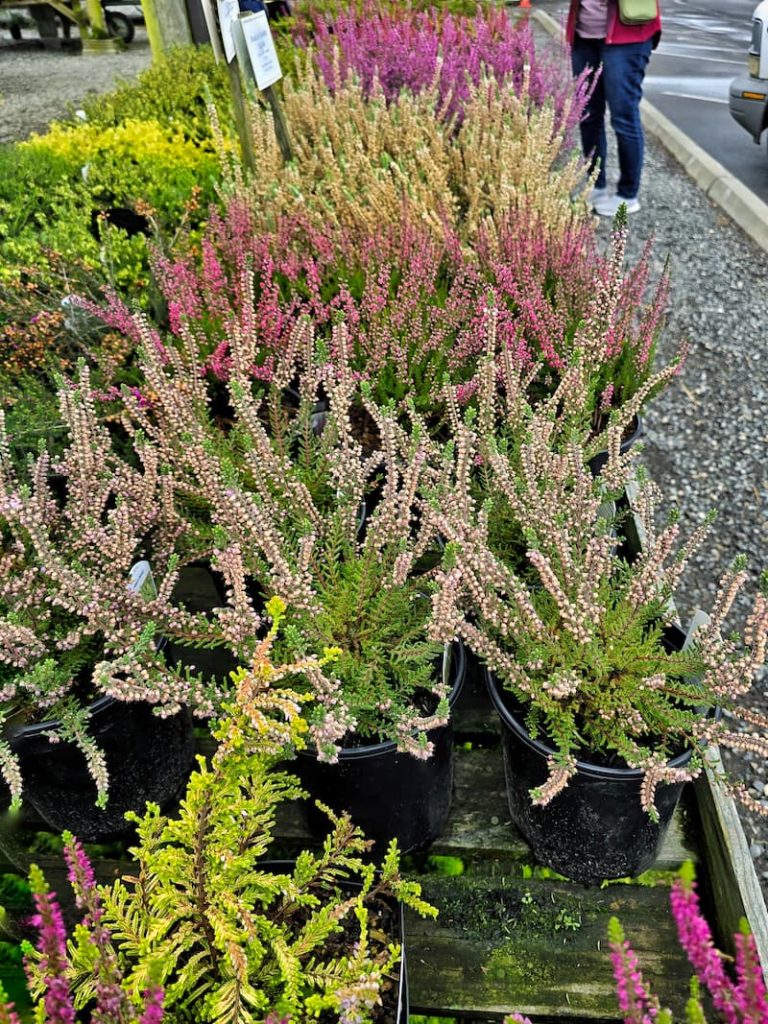
Planting & Care
More About Heather
The flowers are a rich nectar source, attracting bees, butterflies, and other pollinators.
Primroses (Primula spp.)
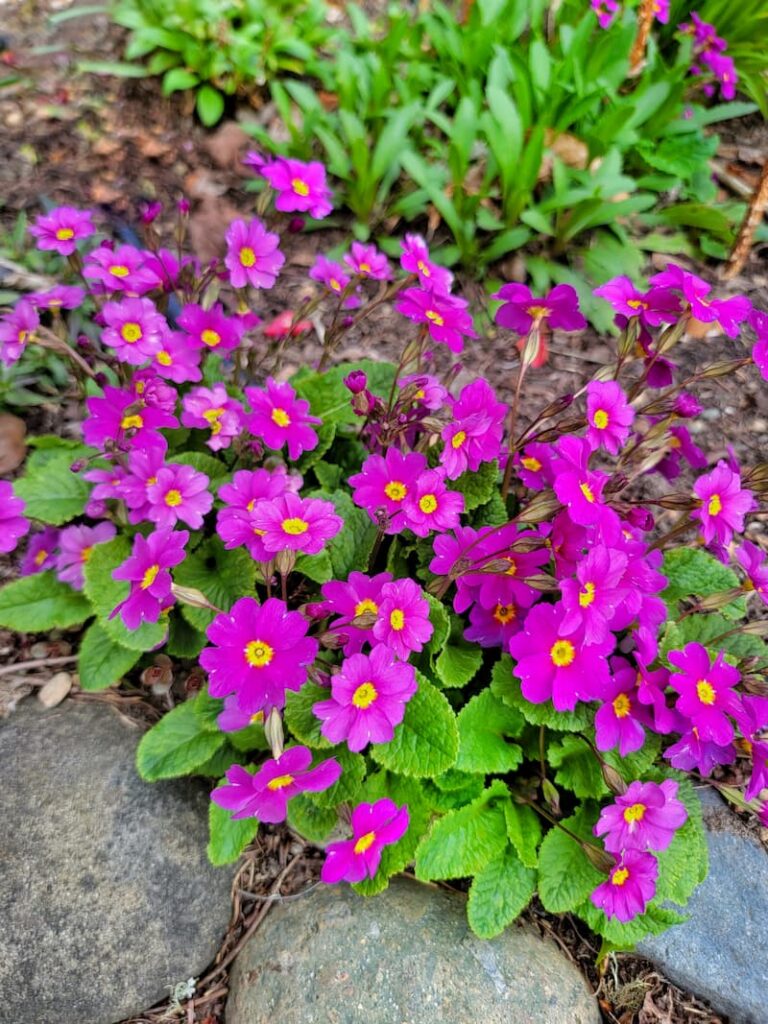
Winter Blooms & Colors
Primroses bloom in vibrant shades of pink, fuchsia, yellow, purple, deep orange, red, and white, adding cheerful color to late winter and early spring gardens.

Planting & Care
More About Primroses
In the colder months, primroses are great winter garden plants with splashes of bright colors to your flower containers, window boxes, borders, and flower beds. These are great perennial plants to divide and transplant after they’ve finished blooming.
Pansies and Violas
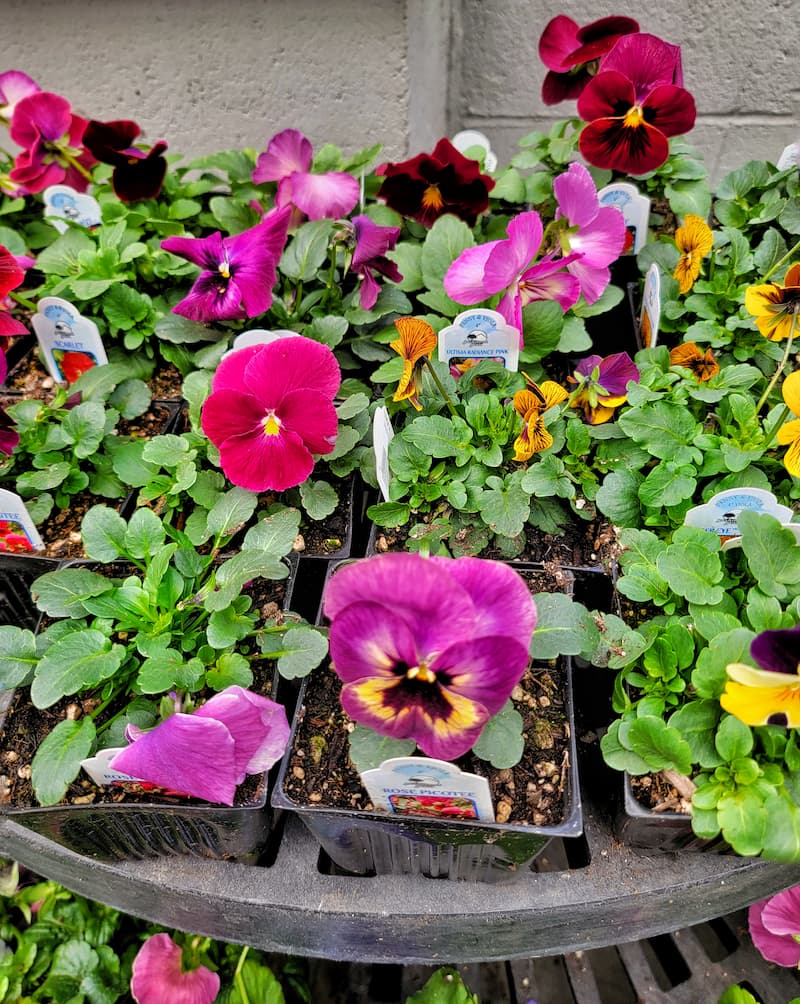
Winter Blooms & Colors
Pansies and violas are available in a variety of vibrant colors, from bright red flowers and sunny yellows to deep purple sand winter whites. They can easily create winter floral arrangements or complement your existing garden borders and containers.
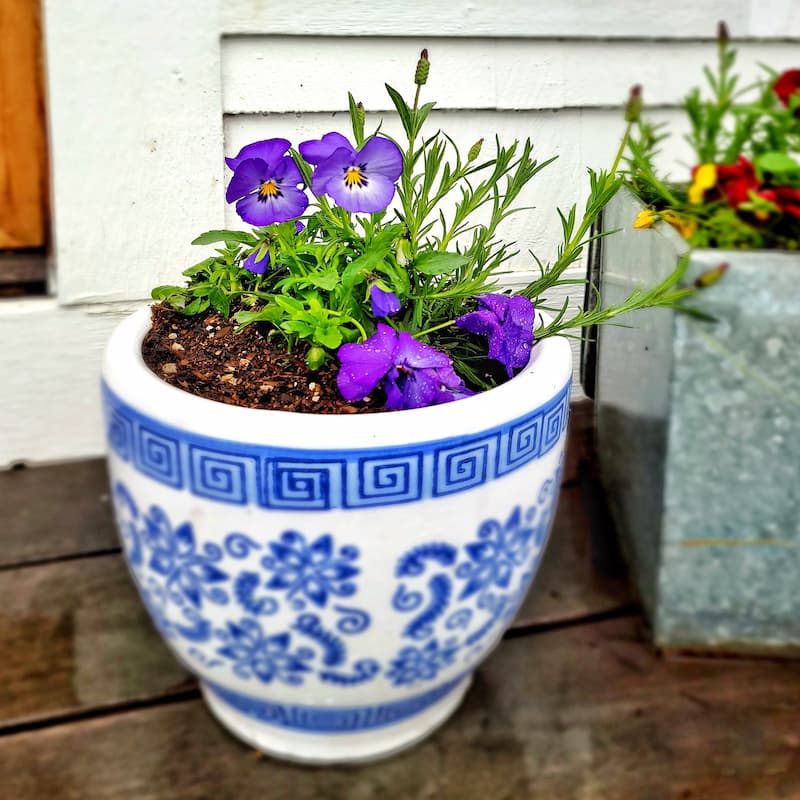
Planting & Care

More About Pansies and Violas
These vibrant flowers are usually seen as short-lived perennials or biennials. This is because they return for another season of breathtaking blooms in places like the Pacific Northwest, with mild summers and cooler winters.
Snowdrops
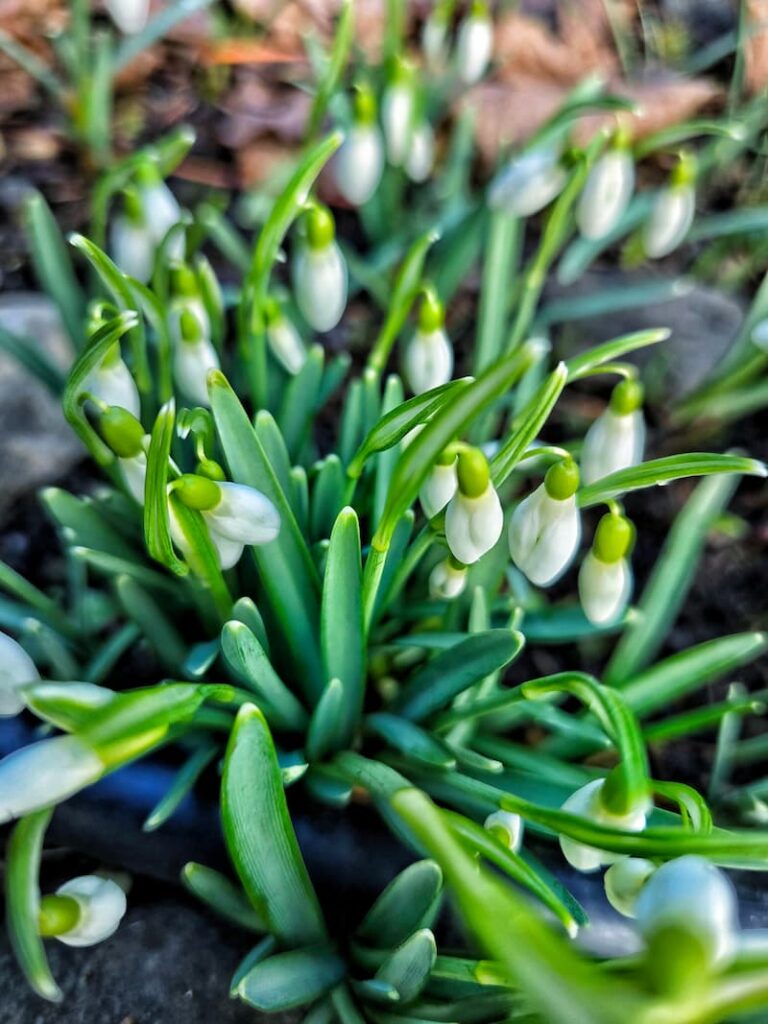
Winter Blooms & Colors
Snowdrop plants are a beautiful sign of the coming spring. Their delicate white bell-shaped blooms bring beauty to any winter landscape.
Planting & Care
More About Snowdrops
Snowdrops’ tiny white flowers bring life to the winter garden and make excellent additions to unique winter floral arrangements.
Ornamental Kale
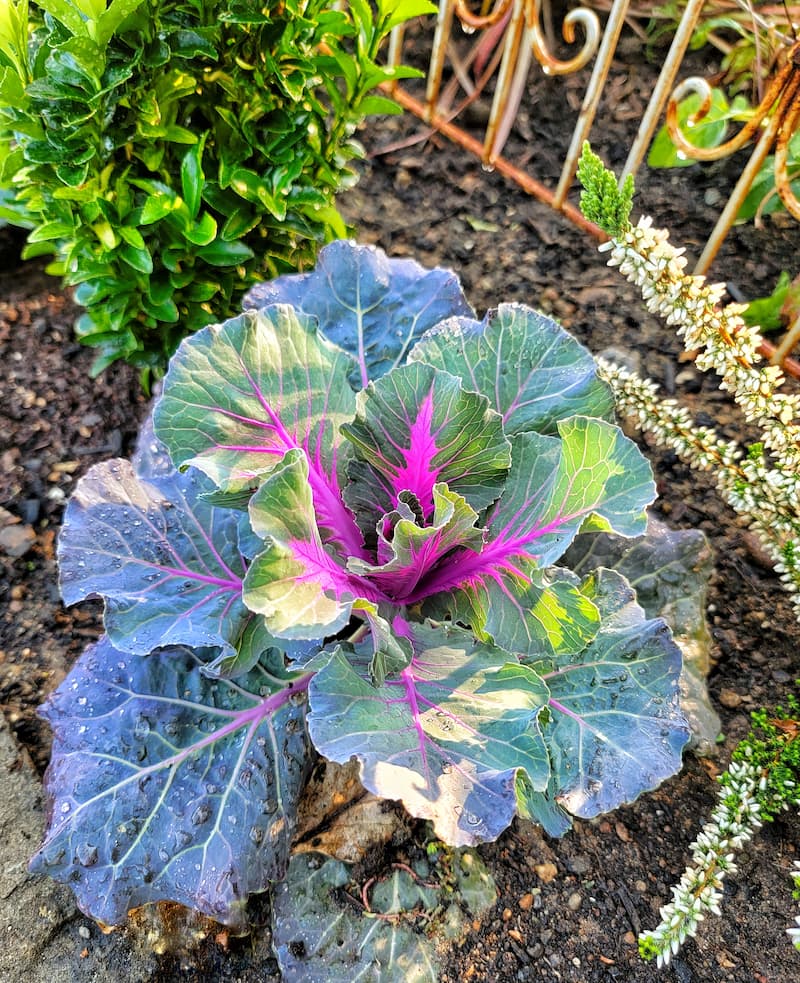
Planting & Care
More About Ornamental Kale
These plants were most likely planted in the fall but still provide a great source of color in the cold and dark winter months, bringing an extra layer of depth and texture to your garden.
Crocus (Crocus spp.)
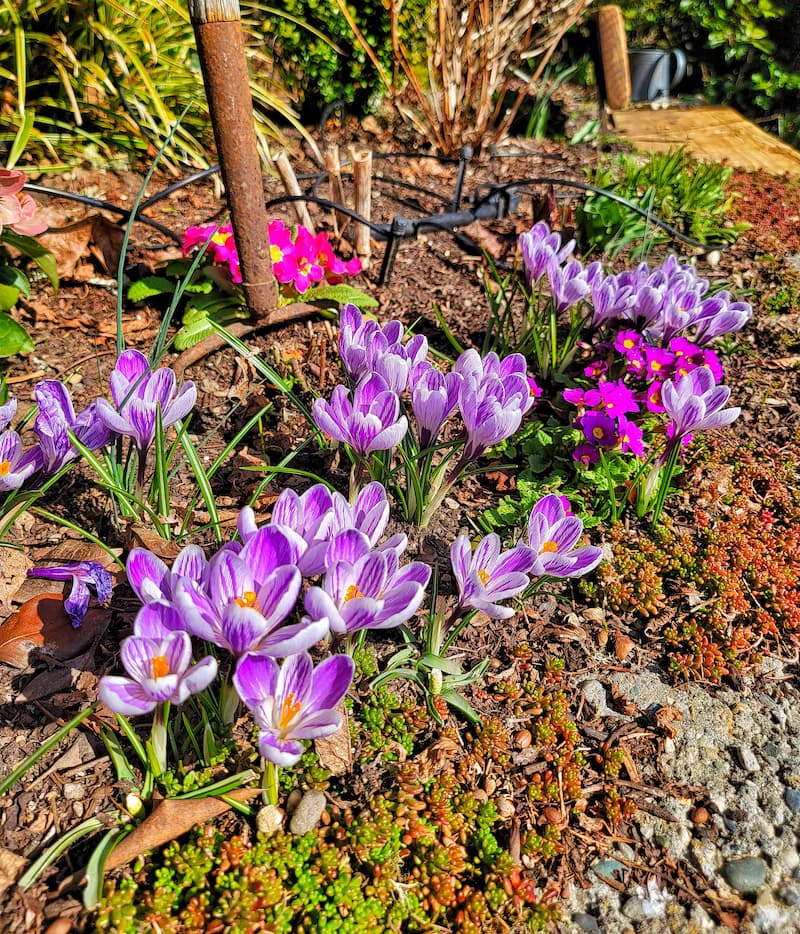
Winter Blooms & Colors
Crocuses are among the first flowers to bloom in late winter, bringing a welcome burst of color when the rest of the garden is still dormant. These hardy bulbs push through the cold soil—even snow—creating a colorful display of purple, yellow, white, and striped petals.
Planting & Care
More About Crocuses
Whether planted in clusters along pathways, scattered in grassy areas, or tucked into garden beds, crocuses bring a touch of spring to the winter garden, reminding us that warmer days are just around the corner.
Japanese Pieris (Pieris japonica)
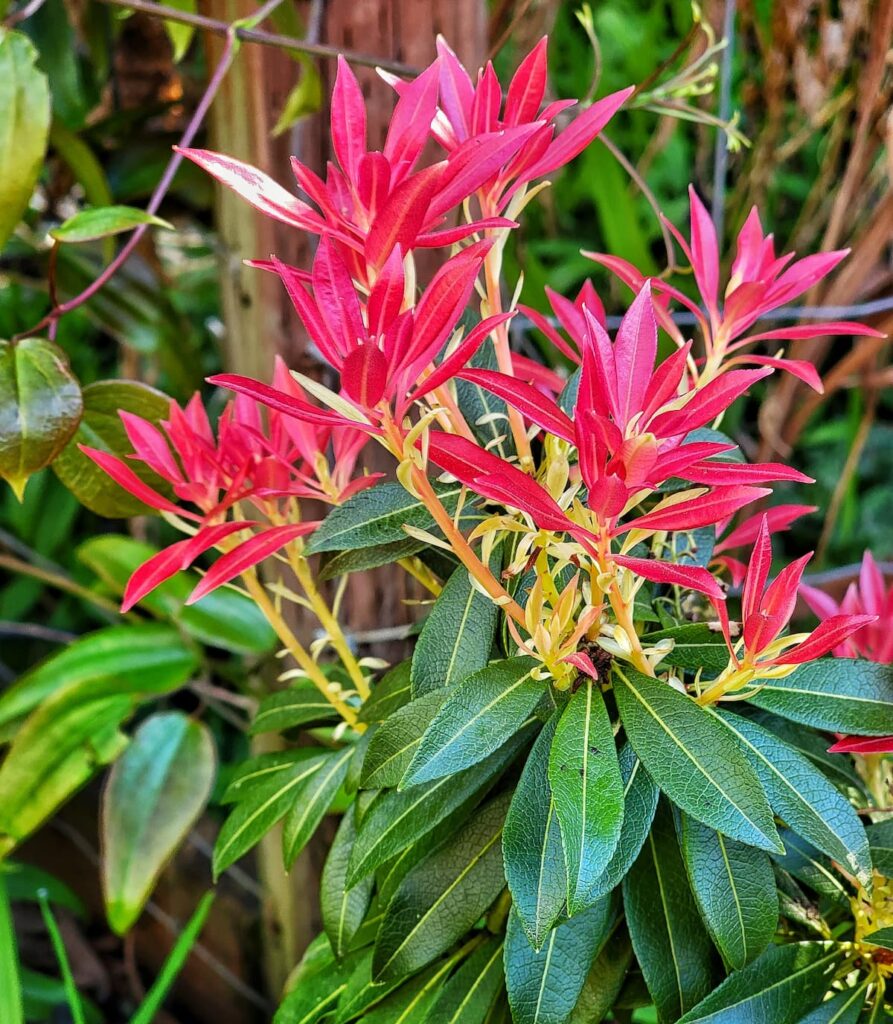
Winter Blooms & Colors
Its glossy, deep green leaves provide structure and color even in the coldest months. In late winter to early spring, drooping clusters of bell-shaped flowers (often white or pink) appear, adding a delicate charm before most other plants wake up.
Planting & Care
Winter Jasmine (Jasminum nudiflorum)
Winter Blooms & Colors
This plant is a hardy, low-maintenance shrub that brings a burst of bright yellow flowers to the late winter garden when little else is blooming.
Planting & Care
More About Winter Jasmine
Unlike fragrant summer jasmines, this variety is known for its early-season color rather than scent, making it a standout in late winter and early spring. These plants can be grown as a shrub, trailing ground cover, or trained on a trellis for a cascading effect.
Flowering Quince (Chaenomeles speciosa)
Winter Blooms & Colors
Blooming in late winter to early spring, its vibrant red, pink, coral, or white blossoms appear before the leaves, creating a striking contrast against bare branches.
Planting & Care
Gardening Made Simple – Your Guide to Beginning Gardening
When to Plant a Winter Garden Zone 8
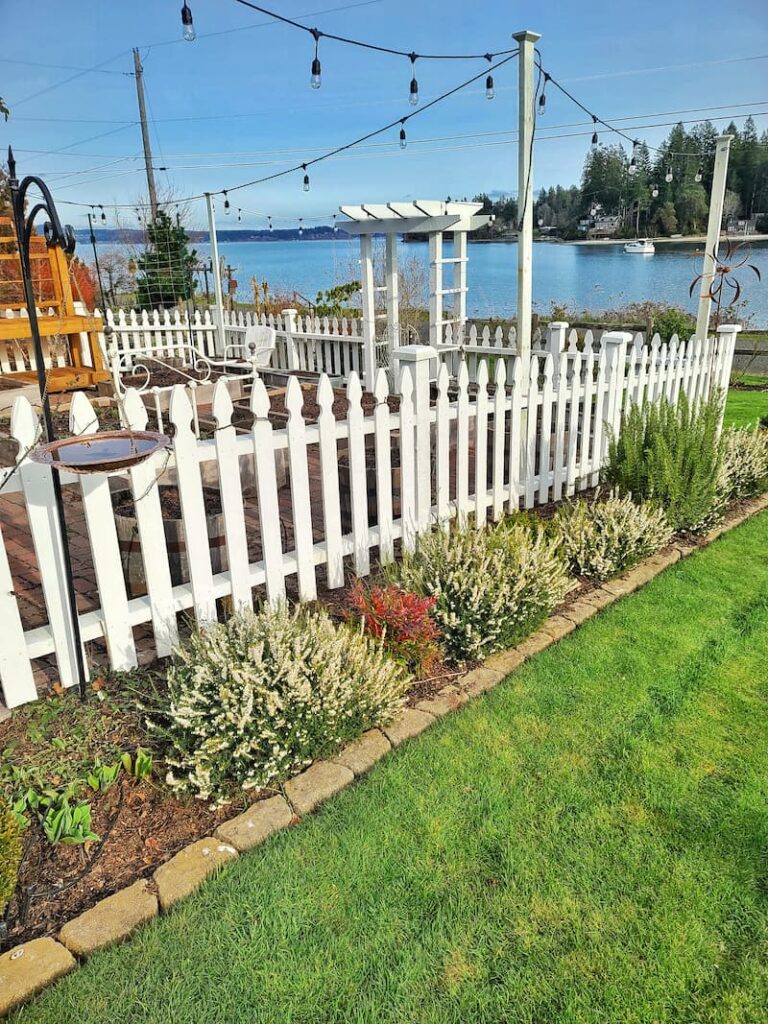
In Zone 8, the mild winters allow for a productive and colorful winter garden. The key is timing—planting at the right moment ensures strong growth and resilience against occasional cold snaps.
Best Planting Times
By staggering plantings throughout fall and early winter, you’ll enjoy continuous color and harvests even in the coldest months. With proper care, a Zone 8 winter garden thrives beautifully.
Maintaining a Winter Garden in Zone 8
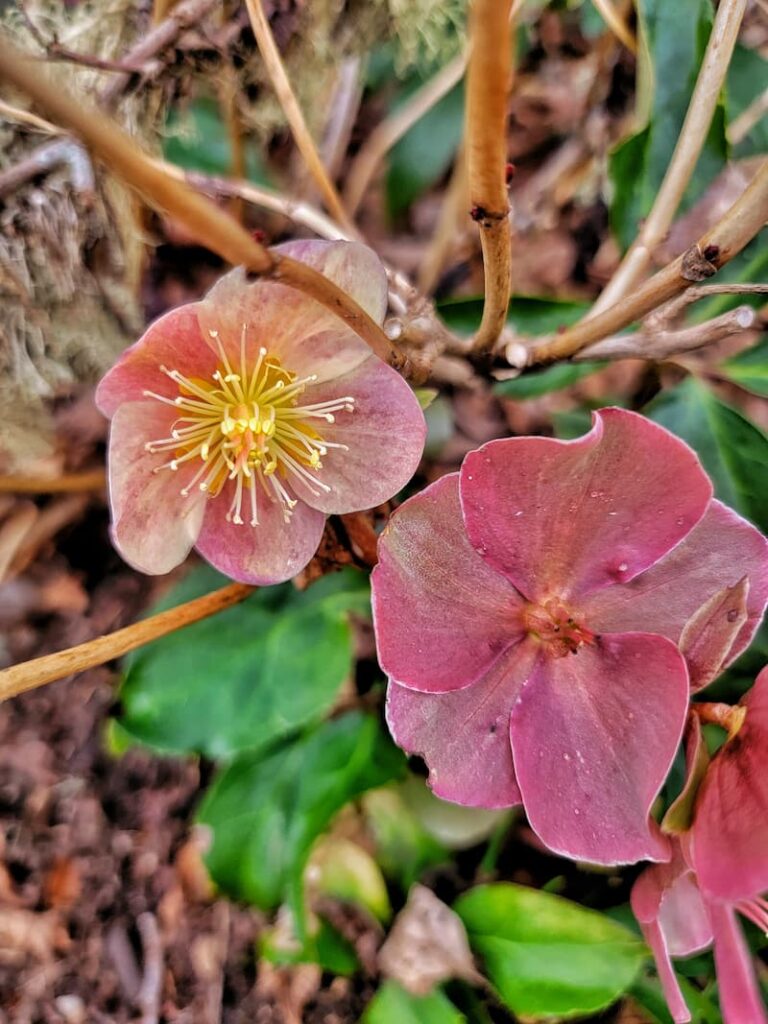
A winter garden in Zone 8 requires minimal maintenance, but a few simple tasks will keep your plants healthy and thriving through the cooler months.
Watering Wisely
Mulching for Protection
Pruning and Deadheading
Frost Protection
Pest and Disease Monitoring
Final Thoughts on Winter Blooming Shrubs and Plants
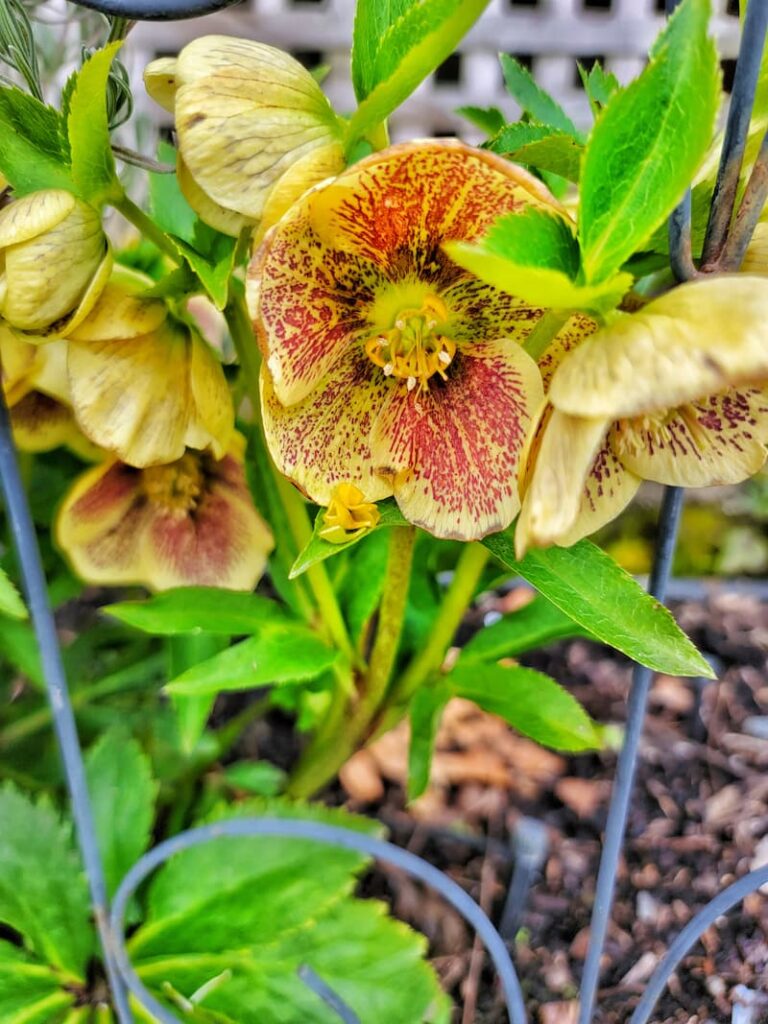
Adding winter-blooming plants to your garden area is a great way to create winter interest and color.
These winter garden flowers come in a variety of colors and sizes and are easy to care for, so you can enjoy winter-blooming plants for months at a time.
With the right care and maintenance, you can create winter magic in your outdoor spaces.
If you have any questions or additional suggestions, feel free to share them in the comments below. And be sure to share this blog post link with anyone who may find these gardening tips useful.
Until next time,
Happy Winter Gardening!

I’m a self-taught hobby gardener. Everything I share with you on my blog is my opinion and things that have worked for me.
MORE POSTS
For You To Enjoy
Follow Me for More Inspiration
Shop my Amazon Storefront, LTK sources, and my favorite home decor, garden, and lifestyle products. When you purchase from one of my links, I earn a small commission, which helps me continue sharing all the content you expect on my blog.
Follow me on Pinterest, Instagram, Facebook, TikTok and LIKEtoKNOW.it. Do you like gardening? Join my Facebook Gardening Tips & Tricks group.

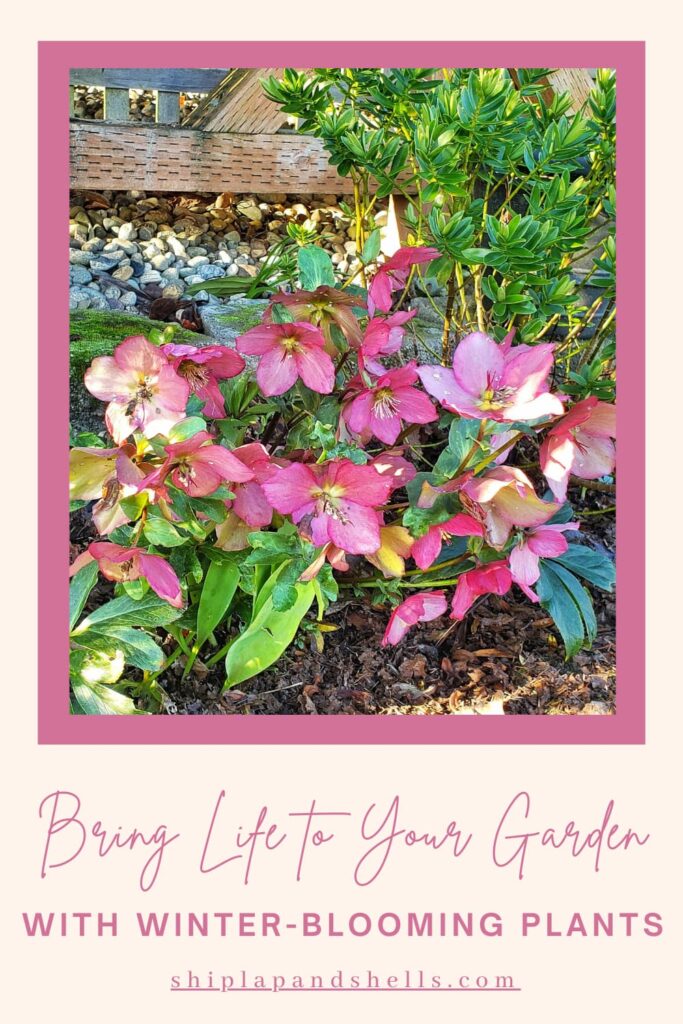


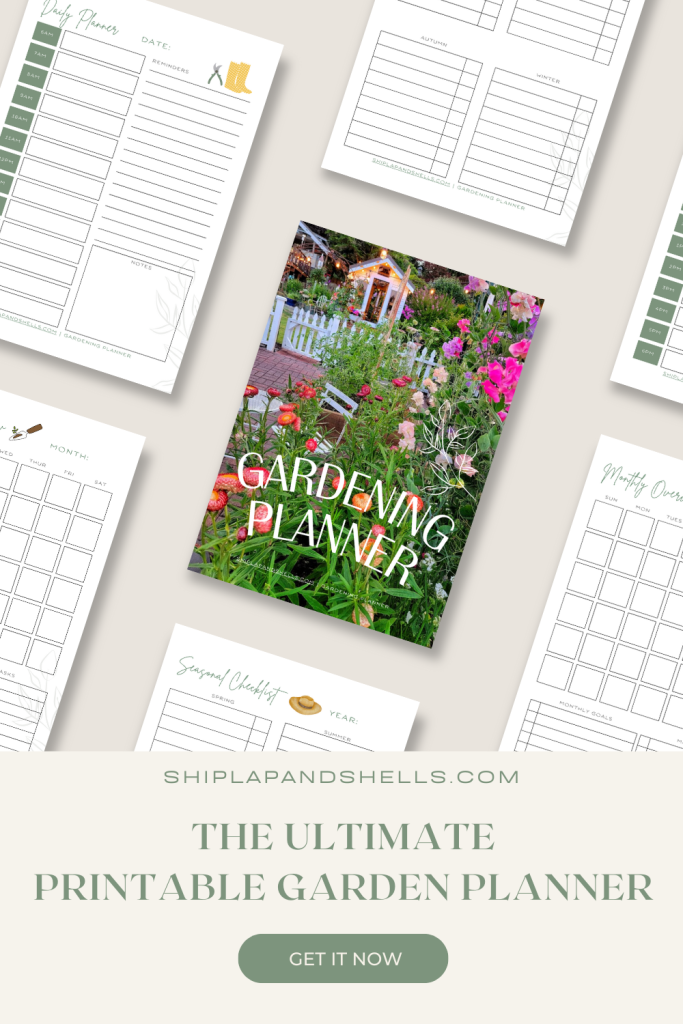

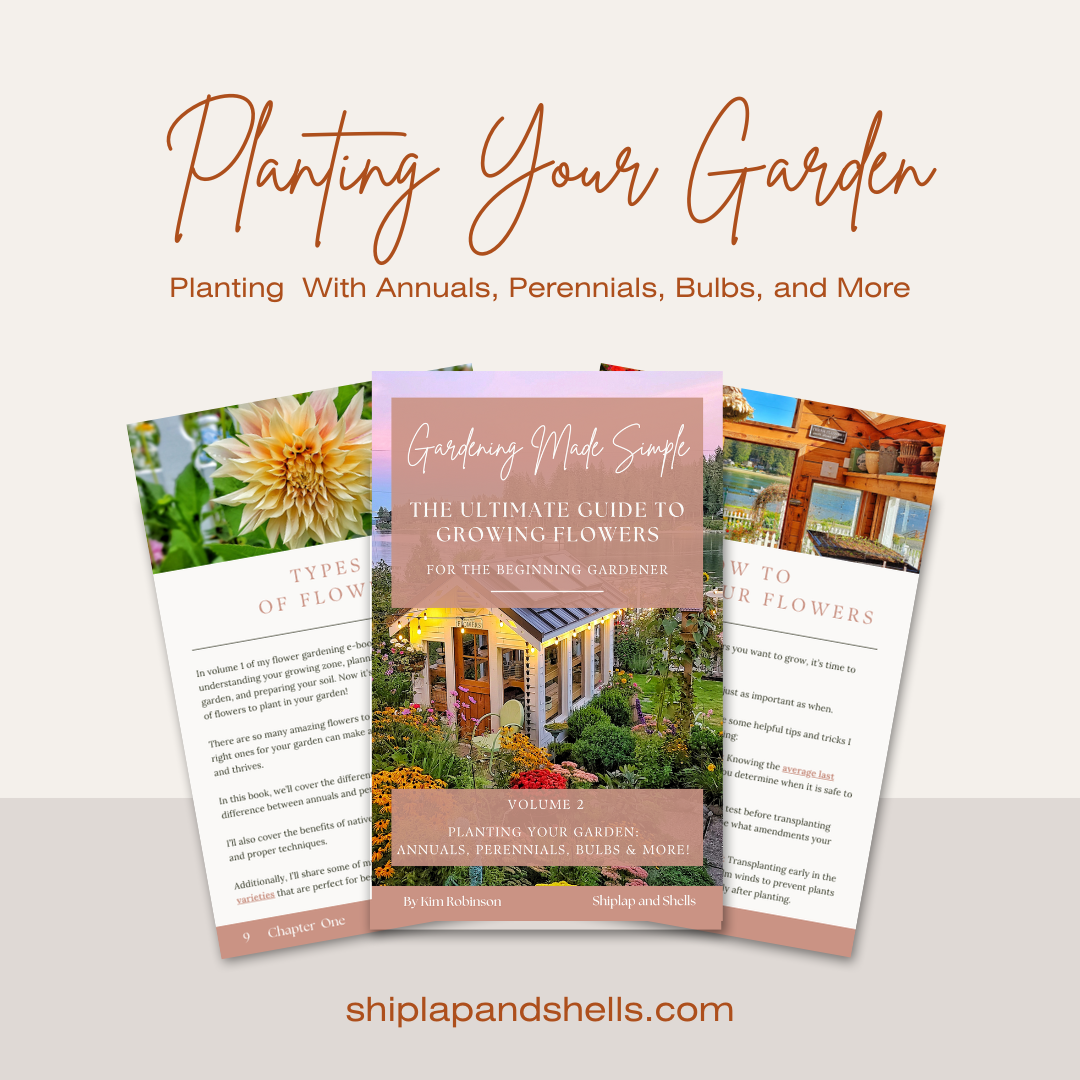
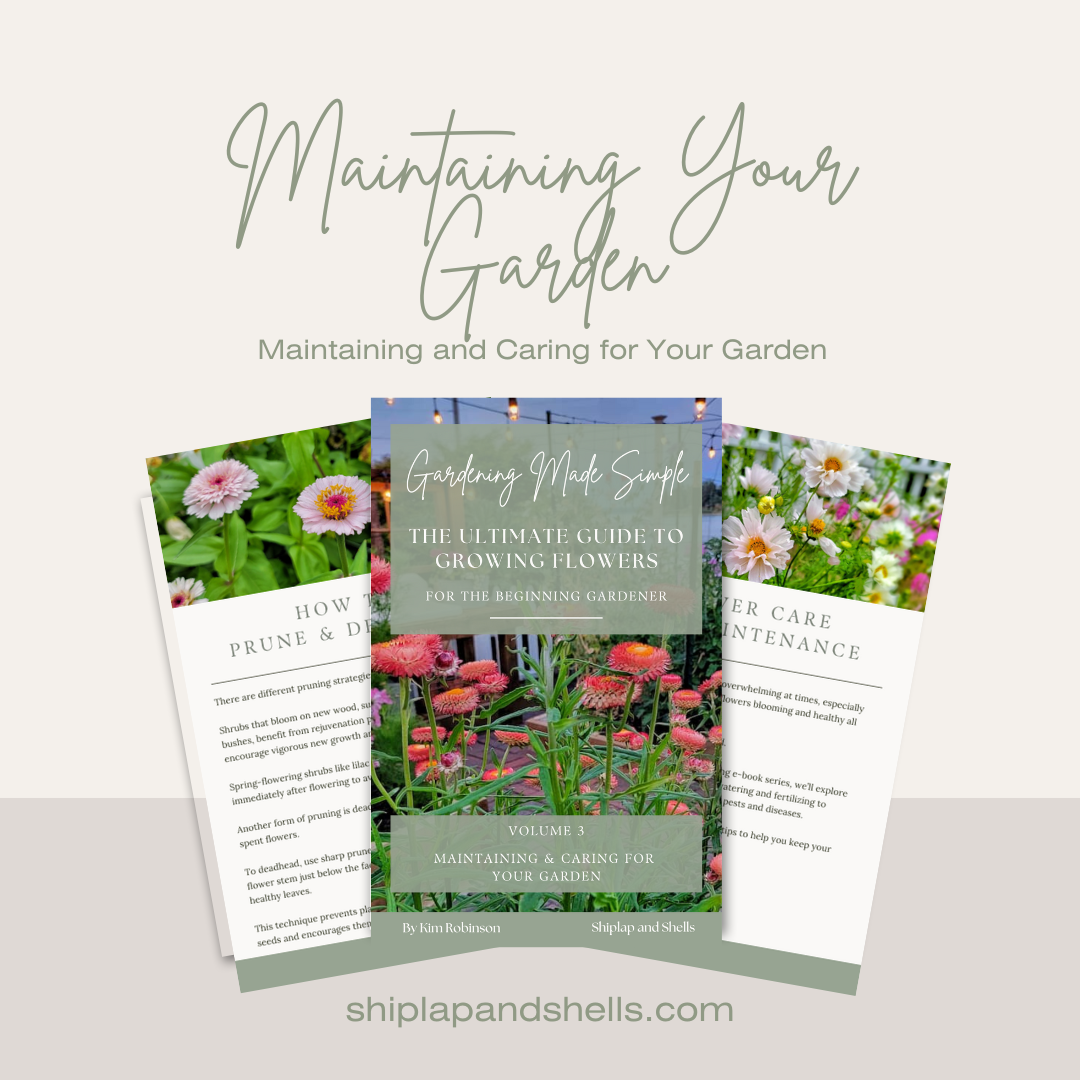
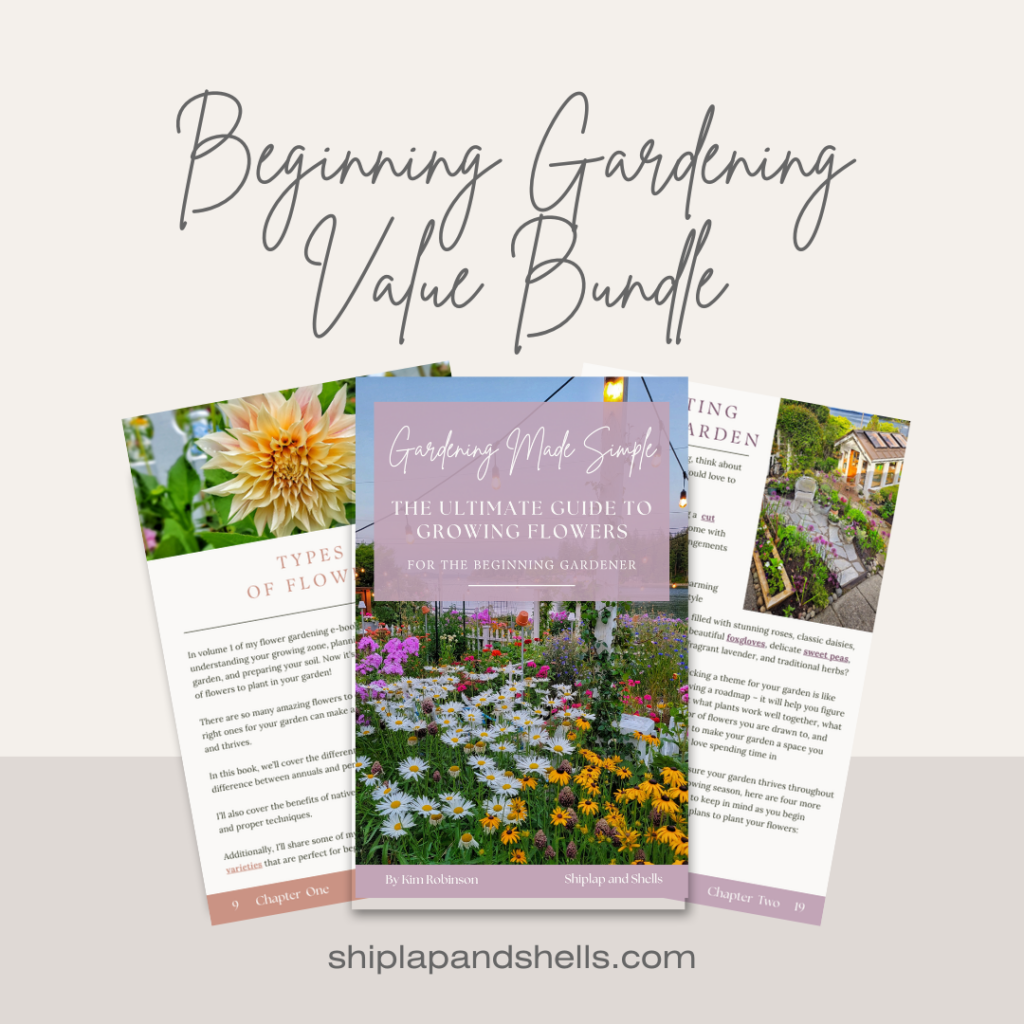
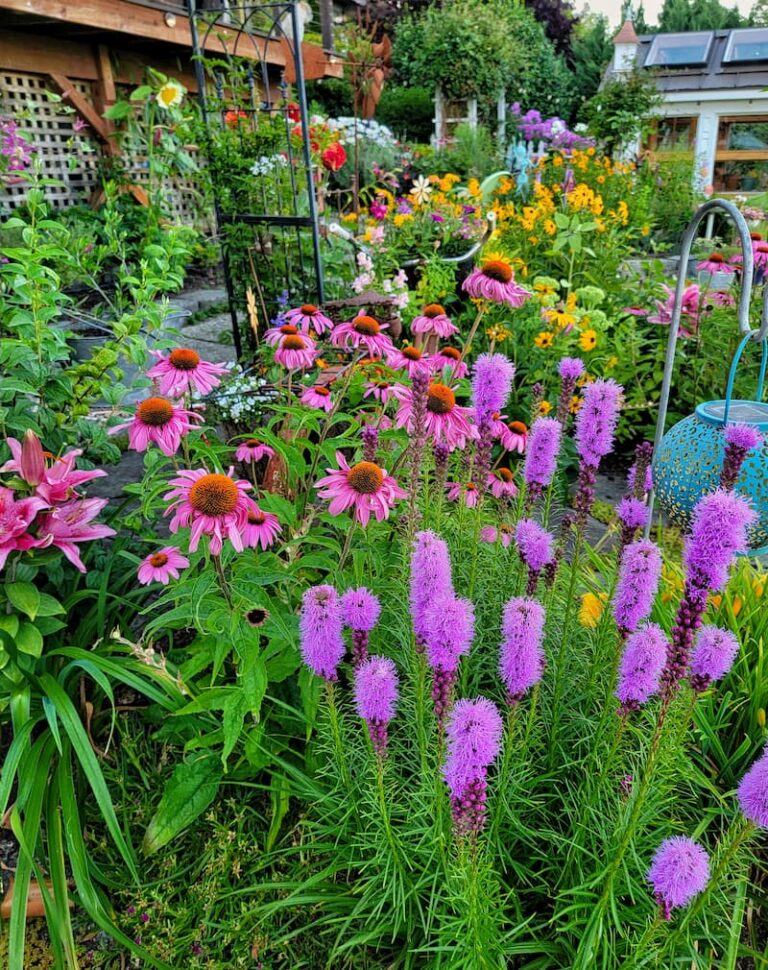
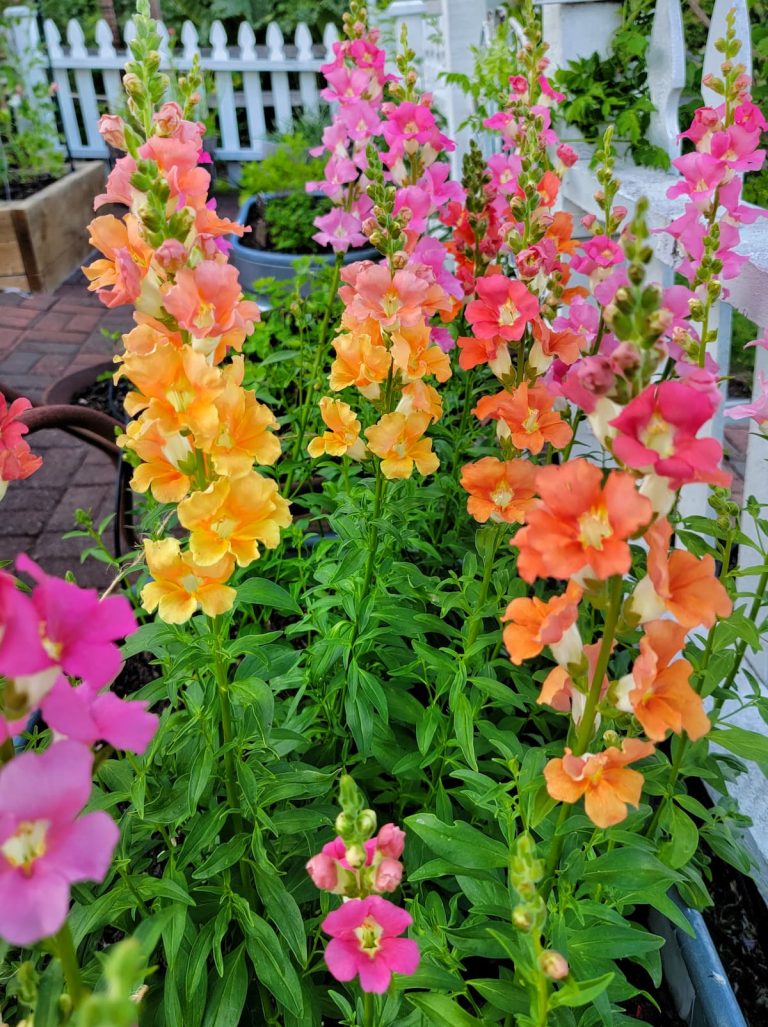

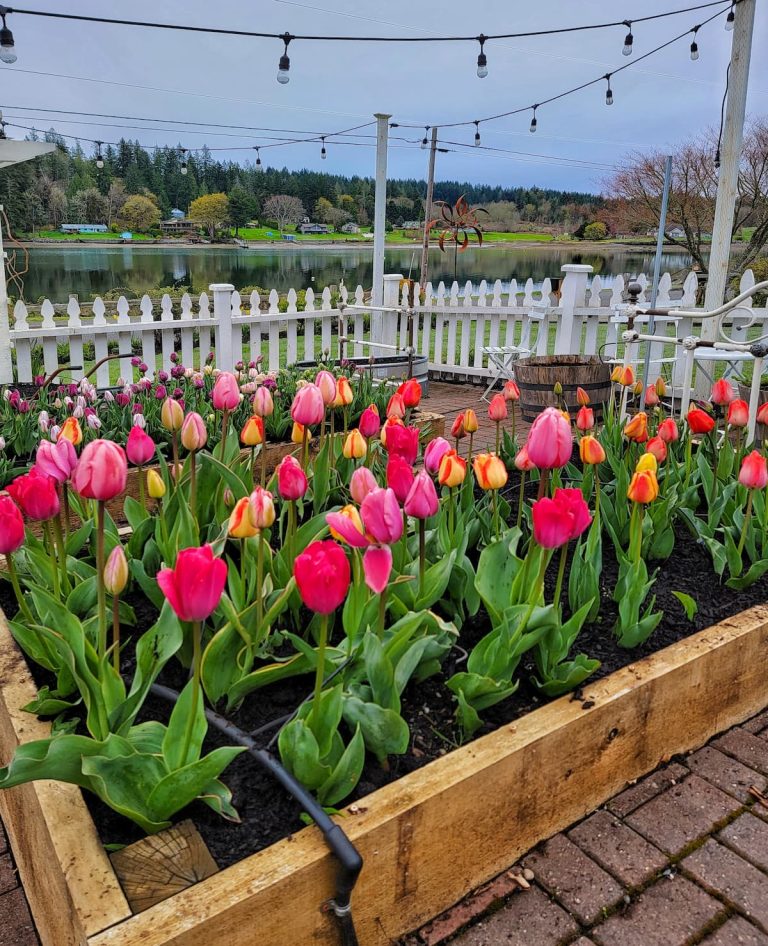
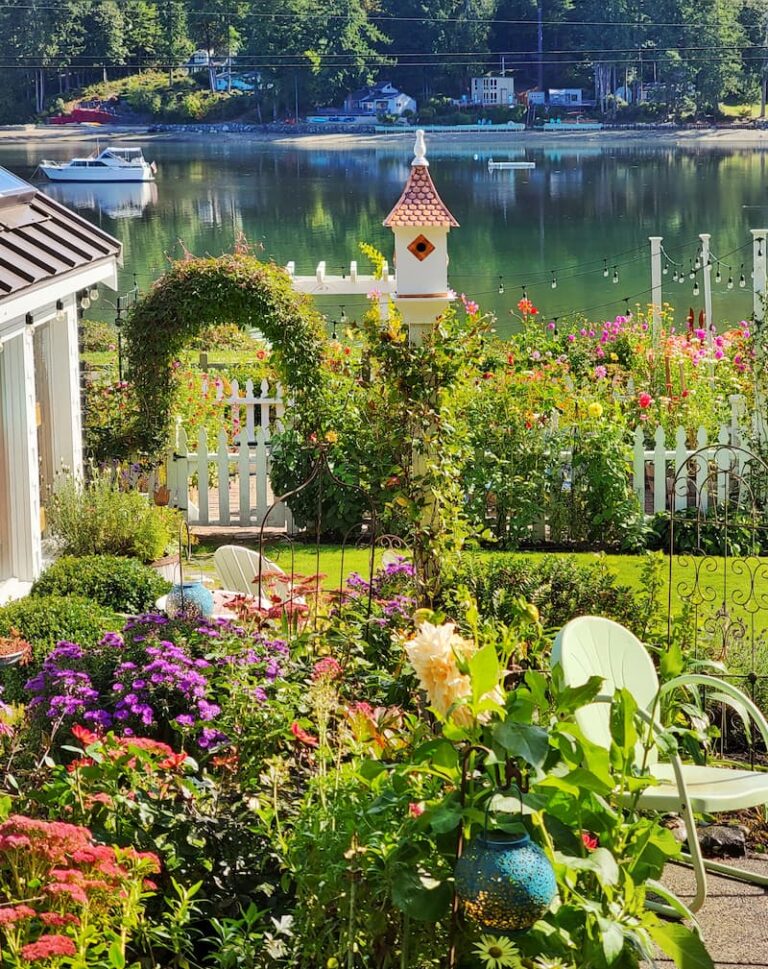
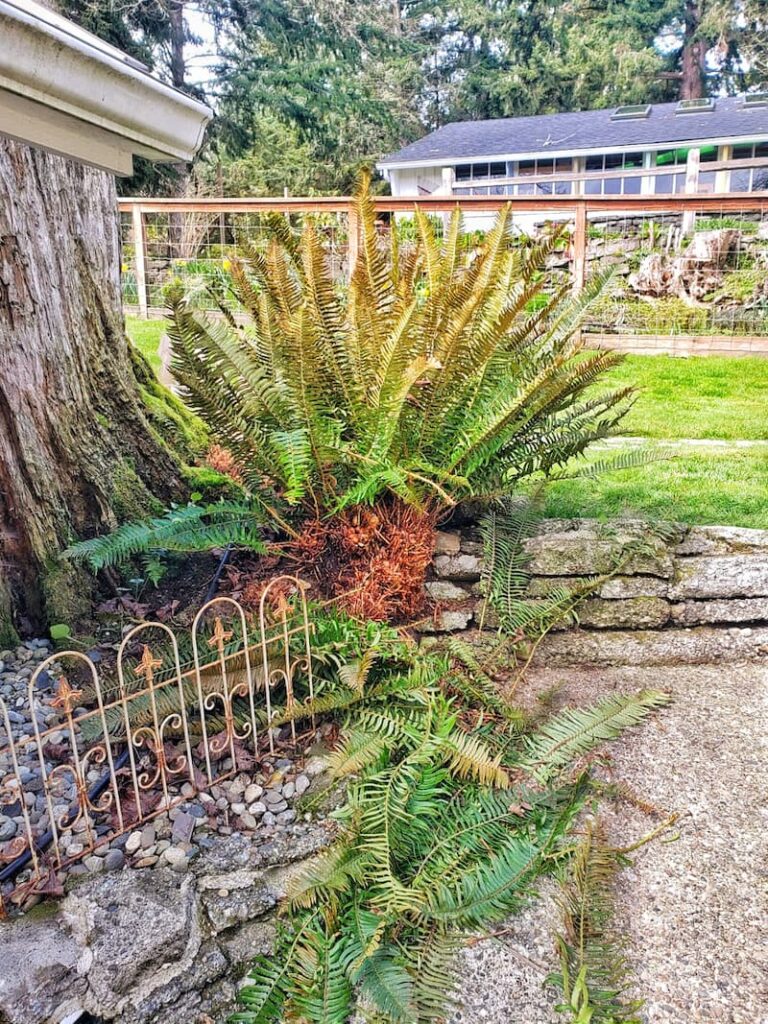
I totally forgot how many beautiful plants and flowers grow in winter. Kim! Several of these grow in my area too so I’m super excited to see if our nursery has them. Our temps have been so up and down lately and we sadly lost a lot of our plants. Our flower beds and containers need a complete overhaul. Thanks for the inspiration! Pinning now and will share on Friday. Big hugs, CoCo
Great post! I love my hellebores – they are so pretty! We can’t grow cyclamen here – only indoors until summer.
Kim, we are gray and overcast here today. Getting the rains from California this next week. After reading this post, I am going outside to cut the few roses in my garden and bringing them inside!
I love hellebores and camilla, we have several in our landscape and they look beautiful. Although they did have a problem when the weather dipped to 17.